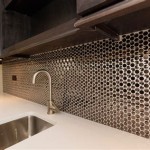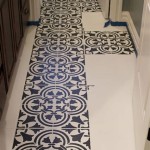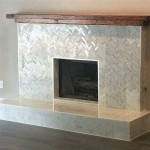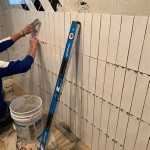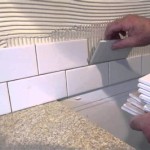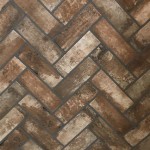Designing The Perfect Ceramic Tile Kitchen Floor
Designing the perfect ceramic tile kitchen floor involves a multifaceted approach, considering factors ranging from aesthetics and functionality to durability and budget. The kitchen, often the heart of the home, demands a flooring solution capable of withstanding heavy foot traffic, spills, and temperature fluctuations. Ceramic tile offers a versatile and practical option, providing numerous design possibilities and long-term value. The key to achieving a truly perfect ceramic tile kitchen floor lies in careful planning and execution, from initial concept to final installation.
The design process should begin with a thorough assessment of the kitchen's existing layout, style, and lighting conditions. This assessment will inform decisions regarding tile size, color, pattern, and texture. Furthermore, consideration should be given to the overall aesthetic of the home, ensuring the chosen tile complements the existing décor. A well-designed ceramic tile kitchen floor can significantly enhance the room's visual appeal and create a cohesive and inviting atmosphere.
Beyond aesthetics, functionality plays a crucial role in the selection process. The kitchen floor must be easy to clean, resistant to stains and scratches, and slip-resistant. These practical considerations are essential for maintaining a safe and hygienic environment. Careful attention to these factors will contribute to the longevity and overall satisfaction with the chosen ceramic tile flooring.
Understanding Ceramic Tile Properties and Types
Ceramic tiles are generally classified into two main categories: glazed and unglazed. Glazed tiles are coated with a liquid glass finish that provides a protective layer, making them water-resistant and easier to clean. Unglazed tiles, on the other hand, possess a more natural and rustic appearance, offering greater slip resistance. The choice between glazed and unglazed tile depends on the specific needs and preferences of the homeowner.
Within these categories, various types of ceramic tiles exist, each with its own unique characteristics and applications. Porcelain tiles, for instance, are a type of ceramic tile known for their exceptional durability and water resistance. They are fired at higher temperatures than standard ceramic tiles, resulting in a denser and less porous material. This makes porcelain tiles an ideal choice for high-traffic areas like kitchens, where they can withstand heavy use and spills.
Another important consideration is the tile's PEI (Porcelain Enamel Institute) rating, which measures its abrasion resistance. A higher PEI rating indicates greater resistance to scratches and wear, making the tile suitable for areas with high foot traffic. For kitchens, a PEI rating of 3 or higher is generally recommended.
Furthermore, ceramic tiles are available in a wide range of sizes and shapes, from small mosaic tiles to large-format tiles. Larger tiles can create a more seamless appearance, reducing the number of grout lines and making the floor easier to clean. Smaller tiles, on the other hand, can be used to create intricate patterns and designs, adding visual interest to the kitchen floor. The choice of tile size and shape should be carefully considered based on the size and layout of the kitchen, as well as the desired aesthetic.
Choosing the Right Color and Pattern for Your Kitchen Floor
The color and pattern of the ceramic tile floor can significantly impact the overall look and feel of the kitchen. Light-colored tiles can make a small kitchen appear larger and brighter, while dark-colored tiles can create a more dramatic and sophisticated atmosphere. The choice of color should also complement the existing cabinetry, countertops, and wall color.
Neutral colors, such as white, beige, and gray, are versatile and can work well with a variety of design styles. These colors also provide a neutral backdrop that allows other elements in the kitchen, such as colorful appliances or accessories, to stand out. However, neutral colors can also show dirt and stains more easily, requiring more frequent cleaning.
Bold colors, such as blue, green, or red, can add personality and vibrancy to the kitchen floor. However, these colors should be used with caution, as they can be overwhelming or clash with other elements in the room. If choosing a bold color, it is important to consider the long-term appeal and ensure it will not become tiresome over time.
Tile patterns can also add visual interest and dimension to the kitchen floor. Common patterns include checkerboard, herringbone, and brick bond. A checkerboard pattern, for example, can create a classic and timeless look, while a herringbone pattern can add a touch of sophistication. The choice of pattern should be based on the overall style of the kitchen and the desired effect.
In addition to traditional patterns, more modern and contemporary options are available, such as geometric patterns or patterns that mimic natural materials like wood or stone. These patterns can add a unique and stylish touch to the kitchen floor.
Installation Considerations and Maintenance
Proper installation is crucial for ensuring the longevity and performance of the ceramic tile kitchen floor. It is recommended to hire a professional tile installer to ensure the tiles are properly laid and grouted. A professional installer will have the necessary tools and expertise to ensure a smooth and even surface, as well as proper sealing of the grout lines.
Before installation, the subfloor must be properly prepared. Any imperfections in the subfloor, such as cracks or unevenness, must be addressed to prevent the tiles from cracking or shifting over time. A self-leveling compound may be necessary to create a smooth and even surface.
Grout selection is another important consideration. Grout fills the spaces between the tiles and helps to prevent moisture from penetrating underneath. Epoxy grout is a durable and stain-resistant option that is ideal for kitchens. Cement-based grout is a more affordable option, but it requires regular sealing to prevent staining.
After installation, regular maintenance is essential for keeping the ceramic tile kitchen floor looking its best. Regular sweeping or vacuuming will remove dirt and debris that can scratch the surface of the tiles. Occasional mopping with a mild detergent will help to keep the floor clean and shiny.
It is also important to clean up spills immediately to prevent staining. Acidic substances, such as vinegar or lemon juice, can damage the grout and should be avoided. A grout sealer should be applied periodically to protect the grout lines from staining and moisture penetration.
By carefully considering these factors, homeowners can design the perfect ceramic tile kitchen floor that is both beautiful and functional. The right choice of tile, color, pattern, and installation method can transform the kitchen into a welcoming and stylish space that will be enjoyed for years to come.
Consideration should also be given to underfloor heating systems. Integrating radiant heat beneath the ceramic tile can provide unparalleled comfort, especially in colder climates. Ceramic tile's excellent thermal conductivity makes it a perfect partner for these systems, ensuring efficient transfer of heat throughout the room.
Ultimately, the perfect ceramic tile kitchen floor is a reflection of the homeowner's individual style and needs. By taking the time to carefully plan and execute the design, it is possible to create a kitchen floor that is both beautiful and functional, adding value and enjoyment to the home.

Ceramic Tile Kitchen Floor Pros Cons And Best Designs Stone Depot

Ceramic Tile Kitchen Floor Pros Cons And Best Designs Stone Depot

Ceramic Tile Kitchen Floor Pros Cons And Best Designs Stone Depot

Ceramic Tile Kitchen Floor Pros Cons And Best Designs Stone Depot

Ceramic Tile Kitchen Floor Pros Cons And Best Designs Stone Depot

How To Choose Kitchen Floor Tiles In A Project Mir Mosaic

Kitchen Floor Tile Ideas 2025 Marble Systems

Best Tile For Kitchen Floor How To Make The Right Choice Welcome Rubi Tools Blog
:max_bytes(150000):strip_icc()/small-kitchen-ideas-sophia-at-home-ce212a5ab80e4c53b6f8dccc9ae70b59-5ca6f96cd0cb40959d368be4c3708094.jpeg?strip=all)
30 Gorgeous Kitchen Floor Tile Ideas

Kitchen Floor Tile Ideas 2025 Marble Systems
Related Posts

